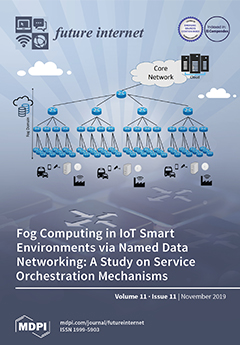Open AccessArticle
A Context-Aware Conversational Agent in the Rehabilitation Domain
by
Thanassis Mavropoulos, Georgios Meditskos, Spyridon Symeonidis, Eleni Kamateri, Maria Rousi, Dimitris Tzimikas, Lefteris Papageorgiou, Christos Eleftheriadis, George Adamopoulos, Stefanos Vrochidis and Ioannis Kompatsiaris
Cited by 12 | Viewed by 4724
Abstract
Conversational agents are reshaping our communication environment and have the potential to inform and persuade in new and effective ways. In this paper, we present the underlying technologies and the theoretical background behind a health-care platform dedicated to supporting medical stuff and individuals
[...] Read more.
Conversational agents are reshaping our communication environment and have the potential to inform and persuade in new and effective ways. In this paper, we present the underlying technologies and the theoretical background behind a health-care platform dedicated to supporting medical stuff and individuals with movement disabilities and to providing advanced monitoring functionalities in hospital and home surroundings. The framework implements an intelligent combination of two research areas: (1) sensor- and camera-based monitoring to collect, analyse, and interpret people behaviour and (2) natural machine–human interaction through an apprehensive virtual assistant benefiting ailing patients. In addition, the framework serves as an important assistant to caregivers and clinical experts to obtain information about the patients in an intuitive manner. The proposed approach capitalises on latest breakthroughs in computer vision, sensor management, speech recognition, natural language processing, knowledge representation, dialogue management, semantic reasoning, and speech synthesis, combining medical expertise and patient history.
Full article
►▼
Show Figures





